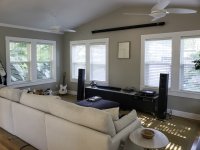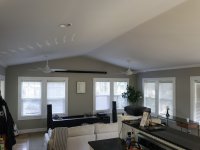- Thread Author
- #1
Is (a lack of) soundstage depth a factor of typical things? I get great width, reasonable height, and good instrument placement, but depth seems to be about at the wall behind the speakers.
Room is about 30x20, vaulted ceilings from about 8/9 to about 15. Speakers are approx 9' apart. Listening position is around 9' from front plane of speakers.
Any recommendations on what to try?
Room is about 30x20, vaulted ceilings from about 8/9 to about 15. Speakers are approx 9' apart. Listening position is around 9' from front plane of speakers.
Any recommendations on what to try?


